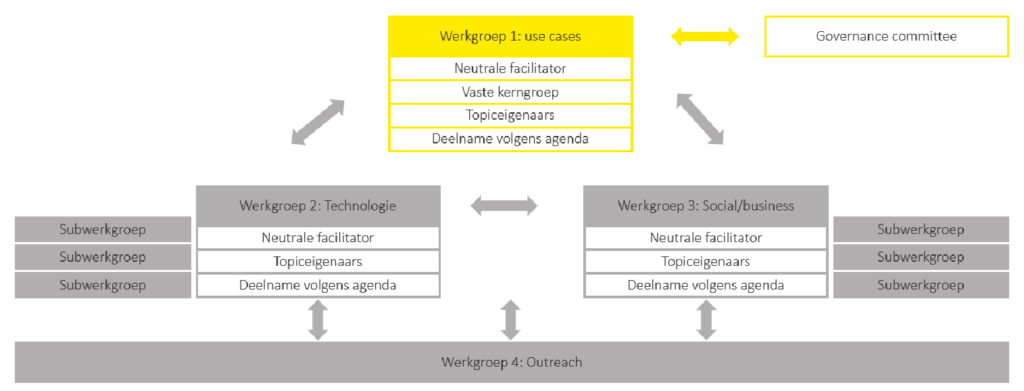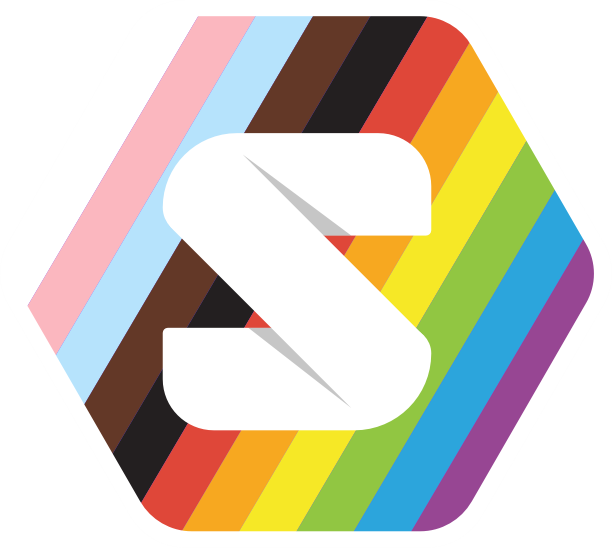
1. Objectives
The general objective is to ensure that Solid is accepted and used by both end-users and service providers when going through and setting up services. To this end, we stimulate data sharing by Solid within Flanders and Belgium and ensure a solid and sustainable foundation. We do this by focusing on:
- Ecosystems and collaboration
- Knowledge building and knowledge sharing
- The implementation of concrete projects
- Incentivization leading to more cooperation and use of Solid
- …
We want Flanders to be an example region in Europe by strongly positioning the Flemish industrial Solid ecosystem. We aspire to be the key research partner for Solid innovations.
2. General principles
- We preserve and guard Solid’s principles and philosophy.
- We always put the end user’s point of view first and strive to added value for that end user:
- Giving the citizen control over the data that is about the citizen and its digital twin. This way, citizens are given more privacy, are able to keep their own data up to date with service providers, …
- Creating citizen confidence in Solid
- A better user experience for citizens and removing existing barriers
- Participation in the Solid community should add the following values for the following roles:
- From the standpoint of Solid technology and solution providers:
- Establish partnerships and collaborations to improve and strengthen their Solid offer
- Detect potential collaborations with customers
- From the standpoint of consumers of Solid technology:
- Realizing specific projects and services where Solid as underlying technology can make the difference for the end-user
- Finding the right partners to collaborate
- Working together to solve shared challenges
- From the research standpoint:
- Being able to make the link between the needs of the community and the research
- Obtain input from the community in the interests of research
- Getting feedback from the community on the research being done
- From the point of view of data suppliers:
- To be further determined
- To be further determined
- From the standpoint of Solid technology and solution providers:
- We deploy Solid in projects where Solid has an added value over other technology.
- We are innovating, there should also be room for experimenting without always guaranteeing success.
- The starting point is that we work in full transparency and openness. We strive for maximum knowledge sharing. At the same time we understand that sometimes commercial or other interests come into play. In that case we look at what is necessary to guarantee confidentiality on a case-by-case basis. This could be, for example, an NDA.
- We are transparent about the role and interests with which we participate in the Solid community.
- We cooperate as much as possible with (existing) European Solid structures and, where possible, make the link to other Solid communities such as Solid World. We follow up with what is happening internationally and collaborate on international cases.
- Communication from the Solid community is as neutral and independent as possible.
- The governance committee is an open facilitator. It does not have a decisive role.
3. Functioning
IMPACT
To know the functioning and impact of the Solid community, indicators can be determined. These can be, for example, the following and can be further refined at a later stage:
- Adoption rate citizens as an indicator of citizen trust in Solid
- Public awareness of Solid and awareness of the importance of secure and controlled data sharing
- Number of use cases that demonstrate that the technology works and that there is a valuable business case
- Number of parties collaborating within a Solid ecosystem
- Number of new applications using Solid
- Number of data suppliers
- Number of insights from the Solid community that are (internationally) reused
- Number of libraries that facilitate
- Employment in the Solid sector
- …
TOPICS TO BE COVERED
- Topics can come from any member of the Solid community, through various channels. It is the use cases workgroup that sets the priorities for what will be further developed within the community. A balance is sought between quick wins, complex long-term challenges and getting specific projects out of the way.
- For each topic, an assessment is made on the following criteria:
- Added Value
- Urgency
- Complexity
- Size
If relevant, this will be elaborated with the technology and/or social/business workgroups.
- For each topic a topic owner is appointed. This person is responsible for the further elaboration in the (sub) workgroups and the creation of a roadmap. The topic owners are part of the use cases workgroup to report the progress.
- The governance committee consists of a representation of Solid stakeholders and monitors the progress via the use cases workgroup and gives advice where needed.
- The topics and their scores are kept in a backlog
ORGANIZATION

AGREEMENTS, ROLES and RESPONSIBILITIES
Use case workgroup
- The use cases workgroup is the heart of the community. The different use cases and topics are discussed in this workgroup. The topics are prioritized based on the previously mentioned criteria. Topics with high priority are further elaborated via the Technology or Social & Business workgroups, depending on the subject. The result of the work from the various workgroups is also fed back to the use cases work group.
- During this workgroup, knowledge sharing can also be set up, based on specific use cases. The agenda will always be shared with the wider group well in advance
- The use cases workgroup has a fixed core group, based on registration. Therefore, continuity is ensured.
- Frequency is approximately every month
- A back log of the topics will be kept.
Technical workgroups:
- The technical workgroup deals with technical cases. The technical workgroup can also be used to coordinate common initiatives (e.g., on standardization). If necessary, a sub-workgroup is set up, in case a particular topic requires more in-depth work.
- The technical workgroup takes place at a maximum frequency of every 2 weeks, for one hour each time.
- Sub-workgroups first provide feedback to the technical workgroup before providing feedback to the use case workgroup.
Social & business workgroups:
- This workgroup deals with the interactions that exist with the end user but also with interactions and collaborations between the different parties that each have their role and responsibilities within a solid ecosystem. If necessary, a sub-workgroup will be set up in case a certain topic needs more depth.
- The meeting dates for the general workgroup are set for the next 6 months
- The agenda can be set with a horizon of about 2 weeks.
- Sub-workgroups focus for 2 to 3 months on something and present it to the generic workgroup. The frequency of meeting depends on the need.
Outreach workgroup:
- This workgroup works around knowledge and information sharing to the outside world: training, events, …
- The specific organization of this workgroup still needs to be further determined.
Governance committee:
- Consists of a representation of stakeholders: government, industry, research and citizens. They are intended to act as a sounding board.
- The members of the governance committee change annually.
- Any organization can apply as a candidate.
General:
- Each workgroup is open to anyone who wants to participate
- For each consultation an agenda is communicated in advance
- Based on the agenda, participants can decide whether to participate
- Experts can be invited based on the agenda if relevant
- Each consultation has a clear chairperson who takes on the role of neutral facilitator (usually someone from Solidlab or the Datanuts company). For the sub-workgroups, this will always be the topic owner.
- Role of Chairperson:
- Practical organization of the workgroup
- Send out agenda
- Facilitate session
- Designate reporter
- Reporting on progress
- Making sure that the report and other documentation is available to whom it concerns
- A reporter is appointed at each meeting (alternating). The rough report is made widely accessible, unless agreed otherwise beforehand (see principles).
- There is a need for an information management system to keep track of the reports, presentations, etc. so that information can be transferred quickly to new participants.
